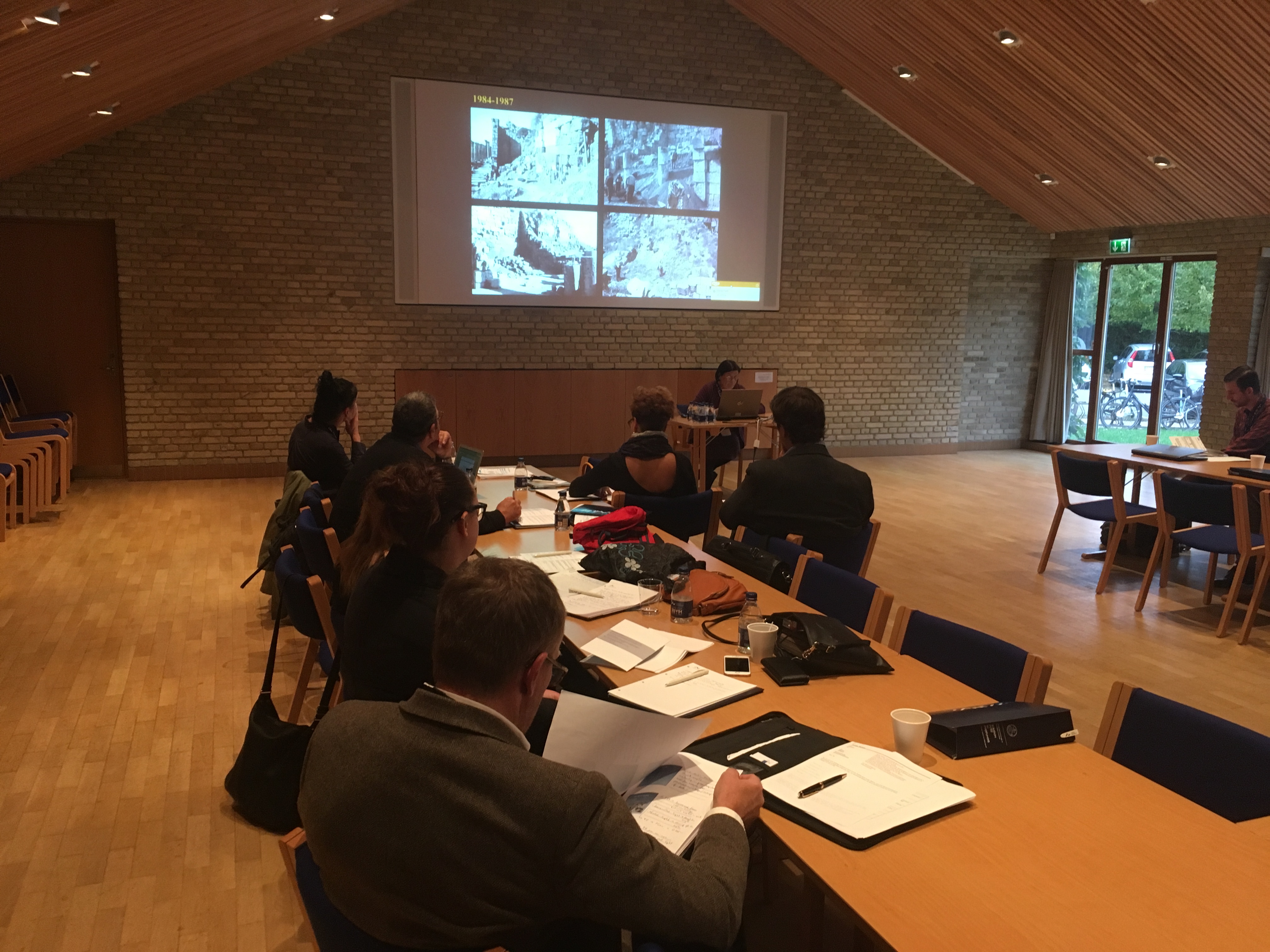Summary of the conference ‘Conspicuous Productions’
By Student assistant Line Egelund.

The conference ‘Conspicuous Productions: Gerasa’s Pottery Finds from Byzantine to Umayyad Times in Context’ took place on October 12th, 2016. The conference was organized by Professor Achim Lichtenberger (University of Münster), Assistant Professor Heike Möller (Aarhus University) and Professor Rubina Raja (Aarhus University). The conference was a joint venture between the Danish National Research Foundation’s Centre of Excellence for Urban Network Evolutions (UrbNet), the Danish-German Jerash Northwest Quarter Project and Ceramics in Context (funded by the Carlsberg Foundation) and is after “Mamluk pottery: Material Culture and History in the Middle Islamic Period” the second of in total five international conferences.
The invited speakers, pottery specialists from archaeology, archaeometry and geoscience working on material from Gerasa, shed light on different aspects of pottery production in the ancient city, based on their detailed studies using closed contexts.
The conference was divided into four sessions. The first one: Pottery Assemblages and Craft Activities dealt with a general introduction of closed archaeological contexts, mainly destruction layers of the mid-8th century CE earthquakes. However, also craft activities in the area of the Sanctuary of Artemis were considered. The second session: Archaeometry and pigment-analyses focused on fabric analysis and further perspectives and potentials in introducing new scientific methods and applying these to pottery analysis in Gerasa. Tableware – Jerash Bowls, the third session, concentrated on tableware production and new results regarding chronological aspect. In the last session: Faces of continuity? The Northwest-quarter Evidence, the speakers’ contributions were focused on the newest excavation results of the Danish-German Jerash Northwest Quarter Project. In general the discussions dealt with the pottery production tackling the question of continuity and discontinuity of some productions regarding typological developments in the transition period from Byzantine to Umayyad times in Gerasa and beyond, looking at the material from different parts of the ancient city of Gerasa. A second aspect focused on fabric analysis and how to proceed in order to get a better chemical fingerprint of the local pottery production.
The conference provided the speakers and participants with a solid overview of the work done on pottery from this period in the ancient city of Gerasa, the production, the typologies – and difficulties in understanding these typologies fully –, the importance of understanding the continuity of such a major site of production and of course the importance of communication between different projects and mission working on the site.
The third conference will take place in Copenhagen in March 2017 and will focus on Roman period pottery from Gerasa and the surrounding region.
